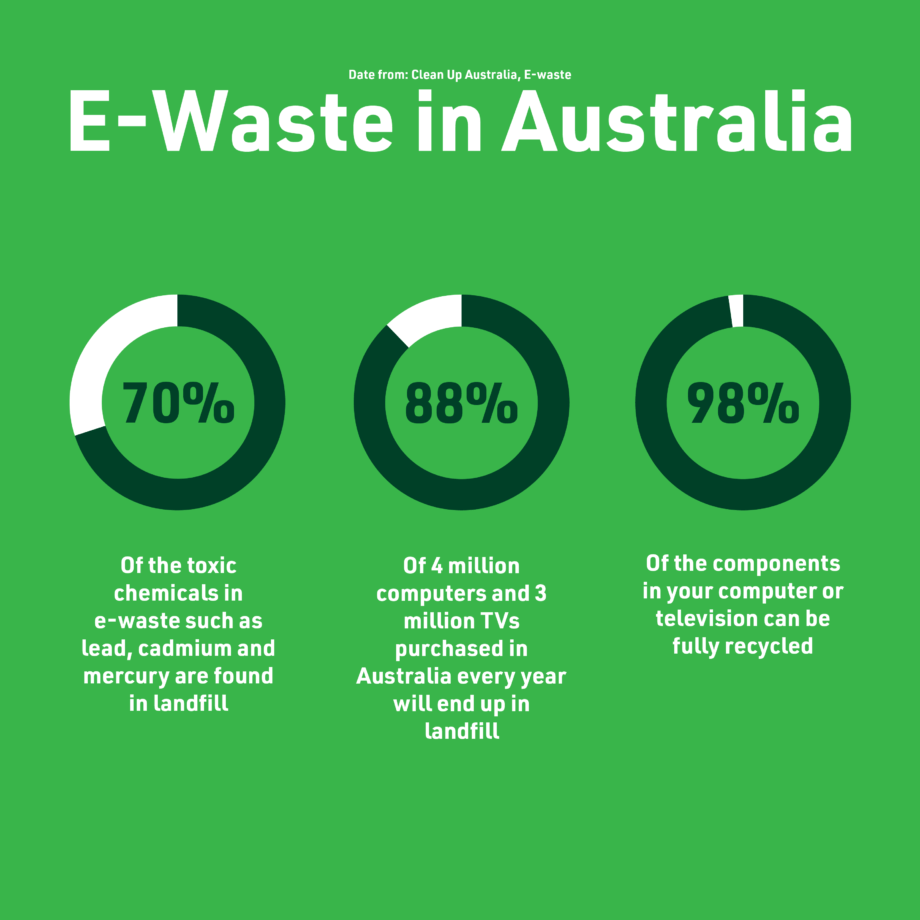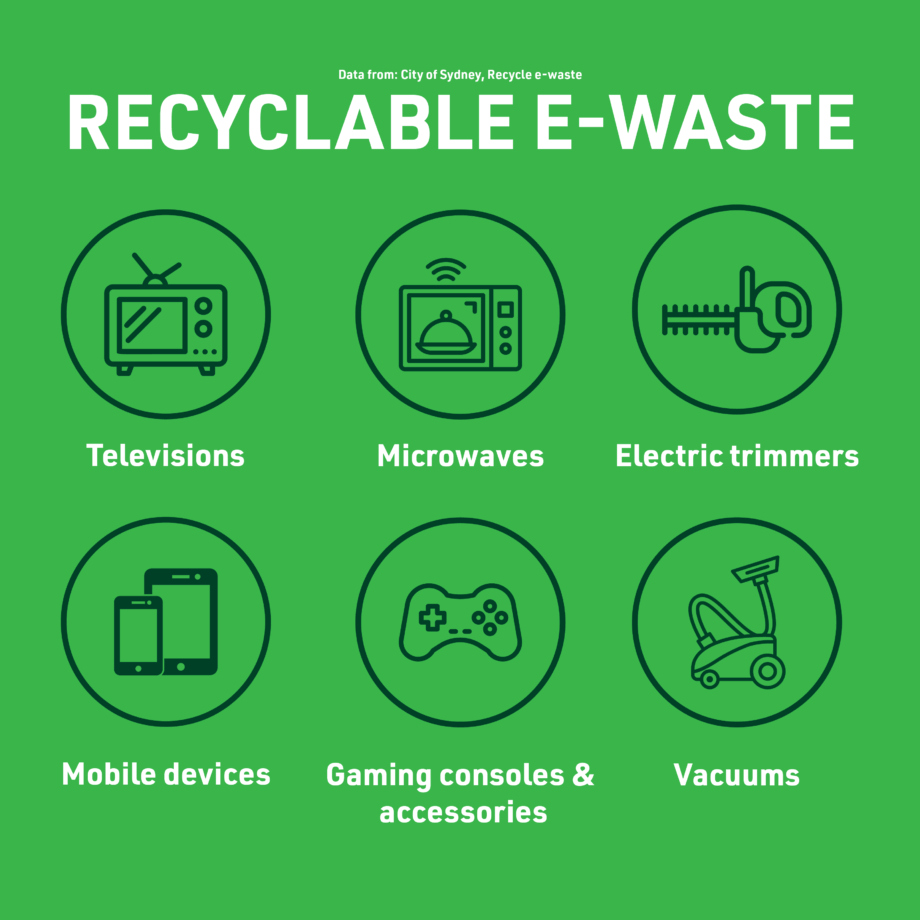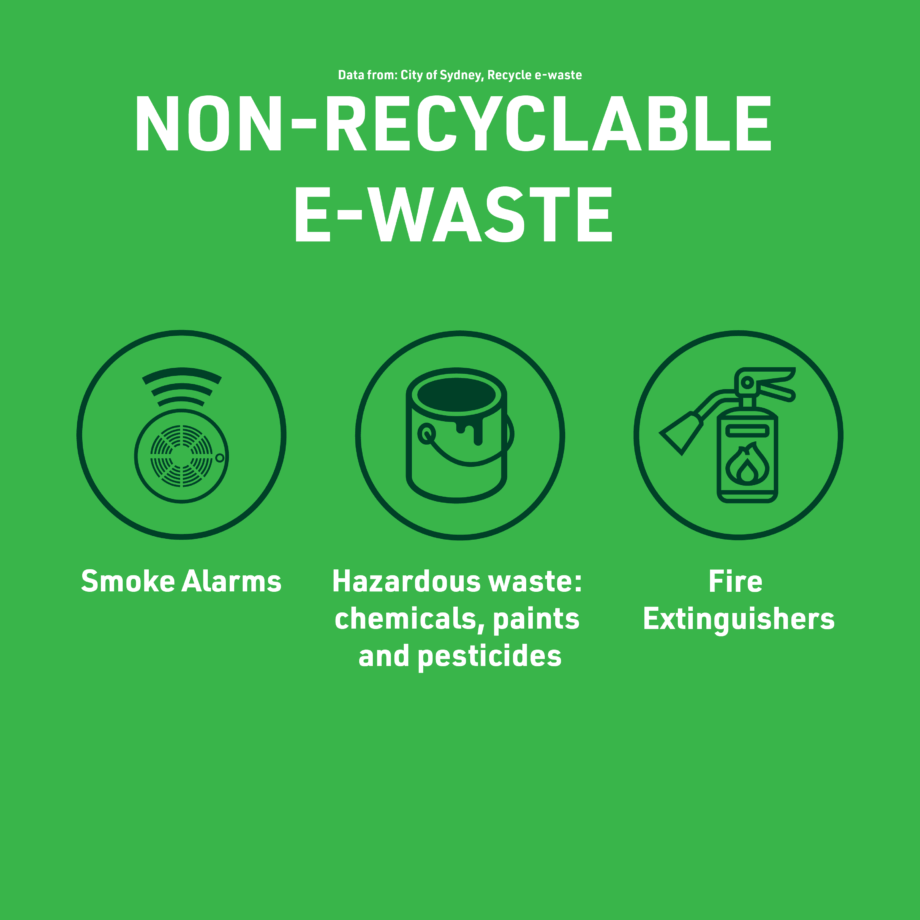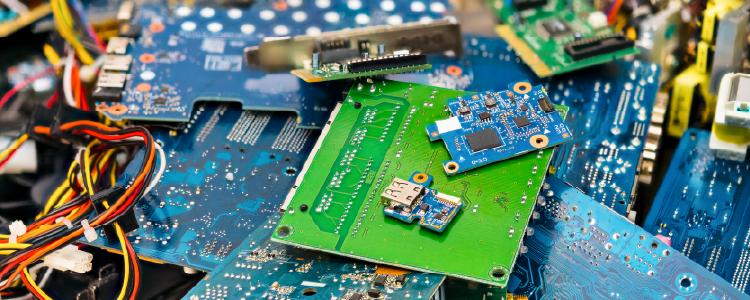At Grace, we understand that you and your business have an obligation to your staff, to your community and to the environment. As your company upgrades and purchase new equipment, you’re also looking for the best way to discard older materials to ensure minimal impact to the environment.
One of the questions we’re constantly asked is in relation to e-waste − what is it and how do you get rid of it? This article will cover all those questions and will provide you with some tips to ensure that you discard of e-waste properly.
What is e-waste?

E-waste consist of electronic products that are unwanted, no longer used, no longer functions, or nearing its end of usability. This include computers, TVs, stereos, mobile phones, printers, copiers and other everyday electronic products.
According to Clean Up Australia, “88% of 4 million computers and 3 million TVs purchased in Australia every year will end up in landfill – this contributes to 140,000 tonnes of electronic waste generated by Australians every year”. Further, “e-waste is responsible for 70% of the toxic chemicals such as lead, cadmium and mercury found in landfill”. So, how do you ensure that your e-waste don’t end up in landfill? First, find out which goods are recyclable and which are non-recyclable.
Which e-waste is recyclable?
Before you can dispose of your e-waste, make sure that you’re aware of what can be reused and recycled. Recyclable e-waste includes:

You can also recycle:
- Home office equipment −photocopiers, scanners, stereos, DVD players and fax machines
- Small household items −blenders, toasters, kettles, coffee machines and heaters
- Garden and power tools –drills, power boards, electric lawnmowers, electric leaf blowers and circular saws. Gas- or petrol-powered items are not recyclable.
Which e-waste is not recyclable?
While the following items cannot and must not be recycled:

How do I get rid of my e-waste?
We understand that it’s easy to accumulate e-waste particularly when your business decides to upgrade their resources and equipment. There are a couple of ways you can safely and confidentially dispose of your e-waste including:
- Contact your local council and find out where their e-waste disposal service is located or whether they can pick up your e-waste. Some councils, including the City of Sydney even has a RecycleSmart app, which allows users to organise a pick-up of their e-waste using a RecycleSmart bag.
- Contact Grace and learn about our e-waste recycling service. Not only can we destroy your data storage devices, we can also collect and recycle other non-secure electronic office equipment. Our confidential disposal and e-waste collection services are able to destroy and break down unwanted electronic goods to ensure that they are recycled and diverted from landfill as much as possible. We also offer confidential waste bins and lockable e-waste collection, to learn more visit our e-waste recycle pageor speak to one of our trusted team members on 1300 725 99.1
Grace and Greenfleet
Grace has partnered with Greenfleet to help fund and provide ongoing maintenance for Australian native trees through our Grace vehicle fleet carbon offset initiative. Greenfleet is a leading not-for-profit organisation that is committed to protecting our climate through reforestation. “We plant native biodiverse forests in Australia and New Zealand to capture carbon emissions on behalf of our supporters. Our forests absorb carbon from the atmosphere, improve soil and water quality, and provide vital habitat for native wildlife”. Read more about Greenfleet here.

What happens to the e-waste after it has been recycled?
Once the e-waste has been collected and sorted, they are processed locally. They are then stripped for useable parts and components, which is then “broken down into commodities and circulated into the market for new products”.
Why is recycling e-waste important?
There are approximately 18.6 million smartphone users in Australia and in 2017 the global household appliances market was valued at $501 million, making electronic goods one of the most used and lucrative market, which equates to more e-waste. By properly and safely recycling e-waste, we can help reduce the need to mine for raw materials and ensure that potentially dangerous and toxic materials found in e-waste doesn’t end up in landfill where it can cost substantial damages to our environment and to our health.
2 City of Sydney, Recycle e-waste
3 Greenfleet, About Greenfleet
4 Statista, Australia: smartphone users 2017-2025
5 Allied Market Research, Household Appliances Market Overview


